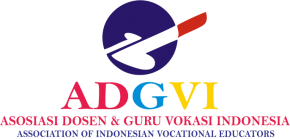Analisis Pelaksanaan Prosedur Operasional Standar Sarana dan Prasarana Belajar Laboratorium Berdasarkan Manajemen Mutu ISO 9001:2008 & IWA 2:2007 di Jurusan Teknik Sipil Universitas Negeri Jakarta
DOI:
https://doi.org/10.21009/jpensil.v3i1.9884Keywords:
Infrastructures, ISO, IWA, managementAbstract
The objectives of this study to determine the percentage level implementation of Standard Operating Procedures learning facilities Laboratory of Civil Engineering, State University of Jakarta in the implementation of quality management ISO 9001: 2008 & IWA 2: 2007. The study lasted for three months from September to November 2013.
Place of research conducted at the State University of Jakarta, precisely at 5 Laboratory of the Laboratory of Wood, Land, Material, Stone, and Plumbing Department of Civil Engineering, State University of Jakarta. The population in this study was 5 5 Laboratory of Laboratory of Civil Engineering Laboratory UNJ include Wood, Land, Material, Stone, and Plumbing. The method used in this research is survey method with data collection using a questionnaire or questionnaires. The trial questionnaire of 115 statements. The test is done to 7 respondents. After the test phase the results obtained valid instruments as much as 112-point declaration.
Data analysis technique is done by searching percentage. The results show that: (a) Laboratory of Civil Engineering UNJ have a Standard Operating Procedure (POS) especially Infrastructures based quality management standard ISO 9001: 2008 and IWA 2: 2007 (b) There are four (4) POS on Infrastructures Laboratory Civil engineering UNJ whose accomplishments are not up to 100%. which amounted to 64.7% which can be categorized fulfillment are lacking, (c) Acquired four (4) percentage level of achievement of the implementation of POS Infrastructures Civil Engineering Laboratory UNJ the percentage rate of the unit does not reach 100%. The results are the result of the analysis of data derived from the 5 respondents who are Laboran of 5 laboratories in this study are: Health, Safety and Environment Laboratory (weight percentage of 73.3%) were categorized been fulfilled, Use of Laboratory (weight percentage of 71% ) categorized been met, Laboratory Equipment Loan (weight percentage of 66.8%) categorized as less fulfilled, and the maintenance and care Laboratory (weight percentage of 47.8%) were categorized are lacking, (d) There is inequality between understanding Laboran percentage of POS by 82 , 8% by POS regarding Infrastructures Laboratory of 64.7%.
References
BSN. 2010. Standar Manajemen Mutu. Jakarta : Badan Standarisasi Nasional.
Hadis, Abdul & Nurhayati. 2010. Manajemen Mutu Pendidikan. Bandung : AlfaBeta.
Moenir. 1992. Manajemen Pelayanan Umum di Indonesia. Jakarta : Bumi Aksara.
Mulyasa. 2004. Manajemen Berbasis Sekolah. Bandung : PT. Remaja Rosdakarya.
Nasution. 2001. Manajemen Mutu Terpadu. Jakarta : Ghalia Indonesia.
Sugiyono. 2011. Metode Penelitian Kuantitatif, Kualitatif, dan R&D. Bandung : Alfabeta
SGS. 2010. Interpretation of ISO 9001 : 2008 & Internasional Workshop Agreement (IWA) – 2 : 2007. Jakarta : SGS
SGS. 2010. Rancangan Pedoman Standarisasi Nasional IWA 2 : 2007.Jakarta : SGS.
Sena. 2011. Instrumen penelitian dan tekniknya. http://rumah-blog-baca.blogspot.com/2011/07/instrumen-penelitian-dan-teknnik.html (diakses 12 juli 2013)
Solihin. 2012. Metode penelitian. http://asep-solihin.blogspot.com/2012/11/metode-penelitian_2.html (diakses 12 juli 2013)
UNJ. 2011. Standard Operating Procedure Sarana, Prasarana, dan Sistem Informasi. Jakarta : Fakultas Teknik Universitas Negeri Jakarta
Wirahatnala. 2013. Pengertian angekt atau kuesioner. http://ssbelajar.blogspot.com/2012/11/angket-atau-kuesioner-questionaire.html (diakses 12 juli 2013)











.png)
.png)
1.png)

